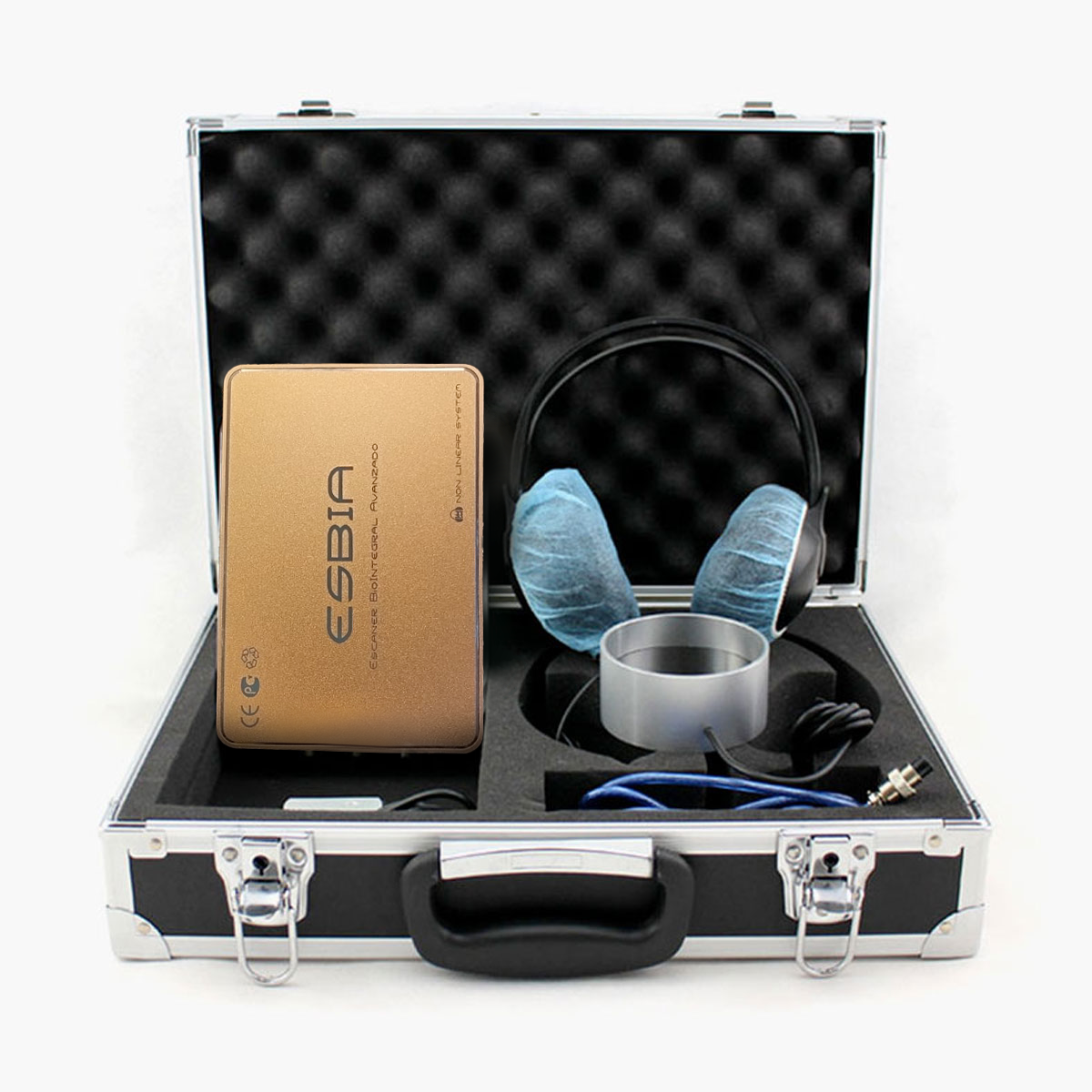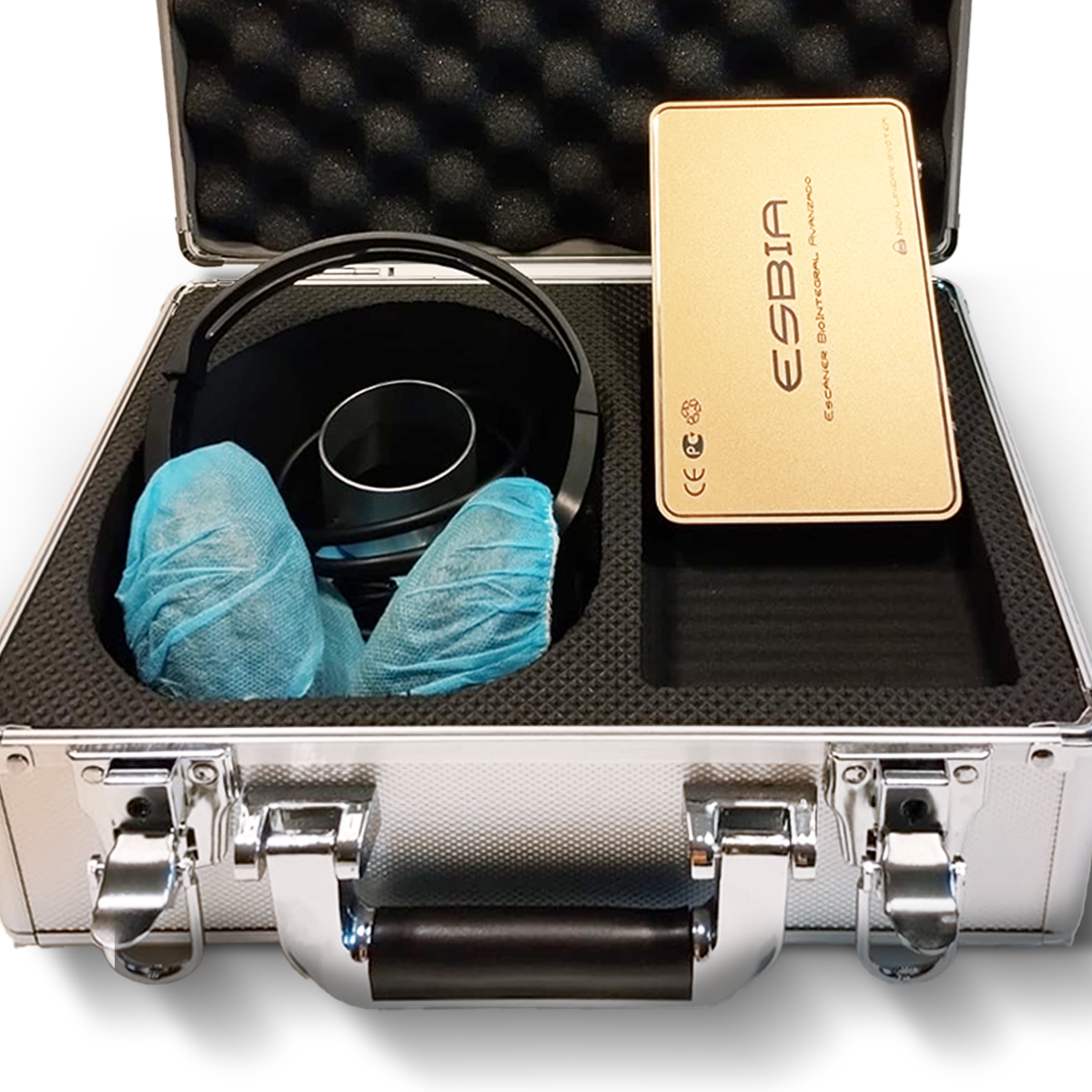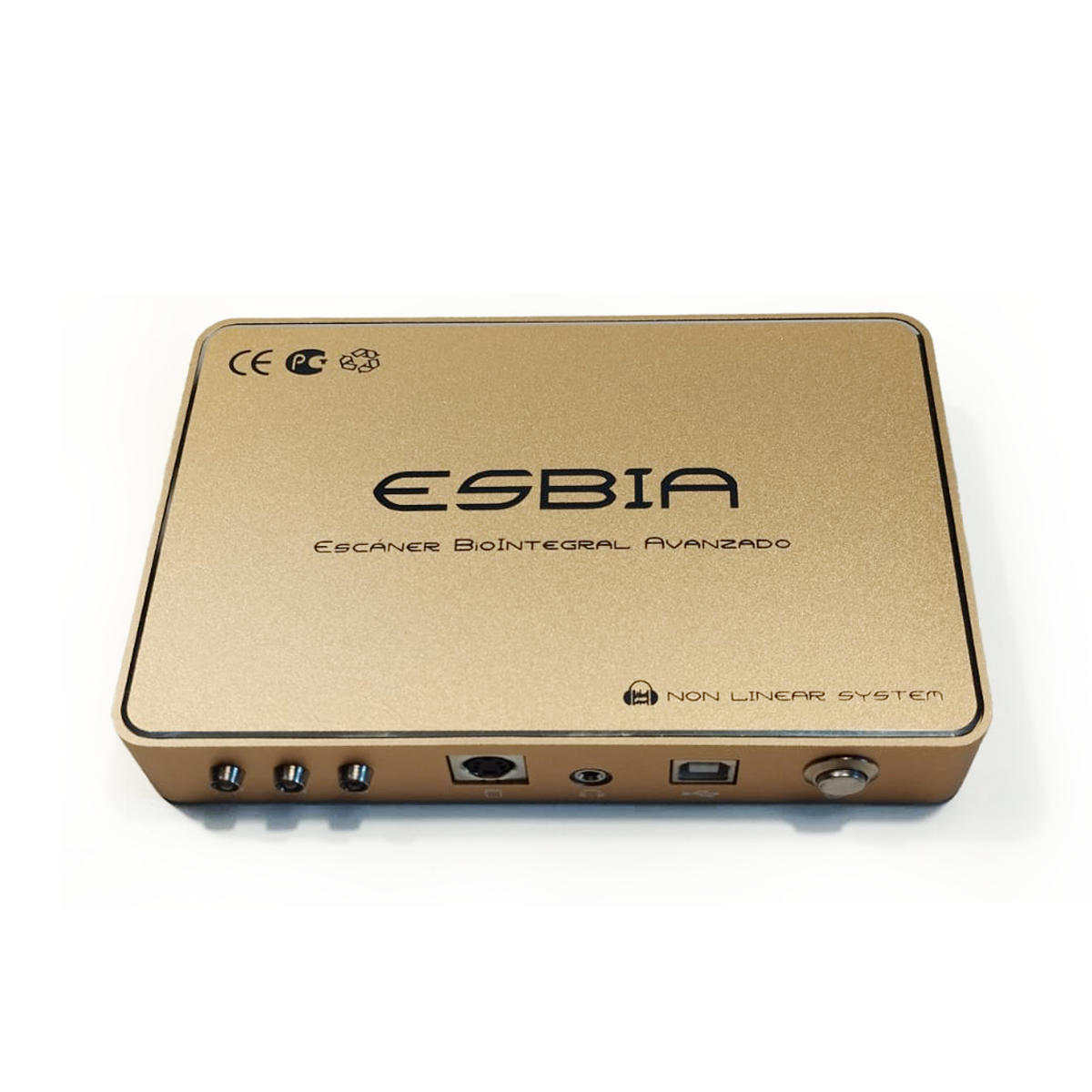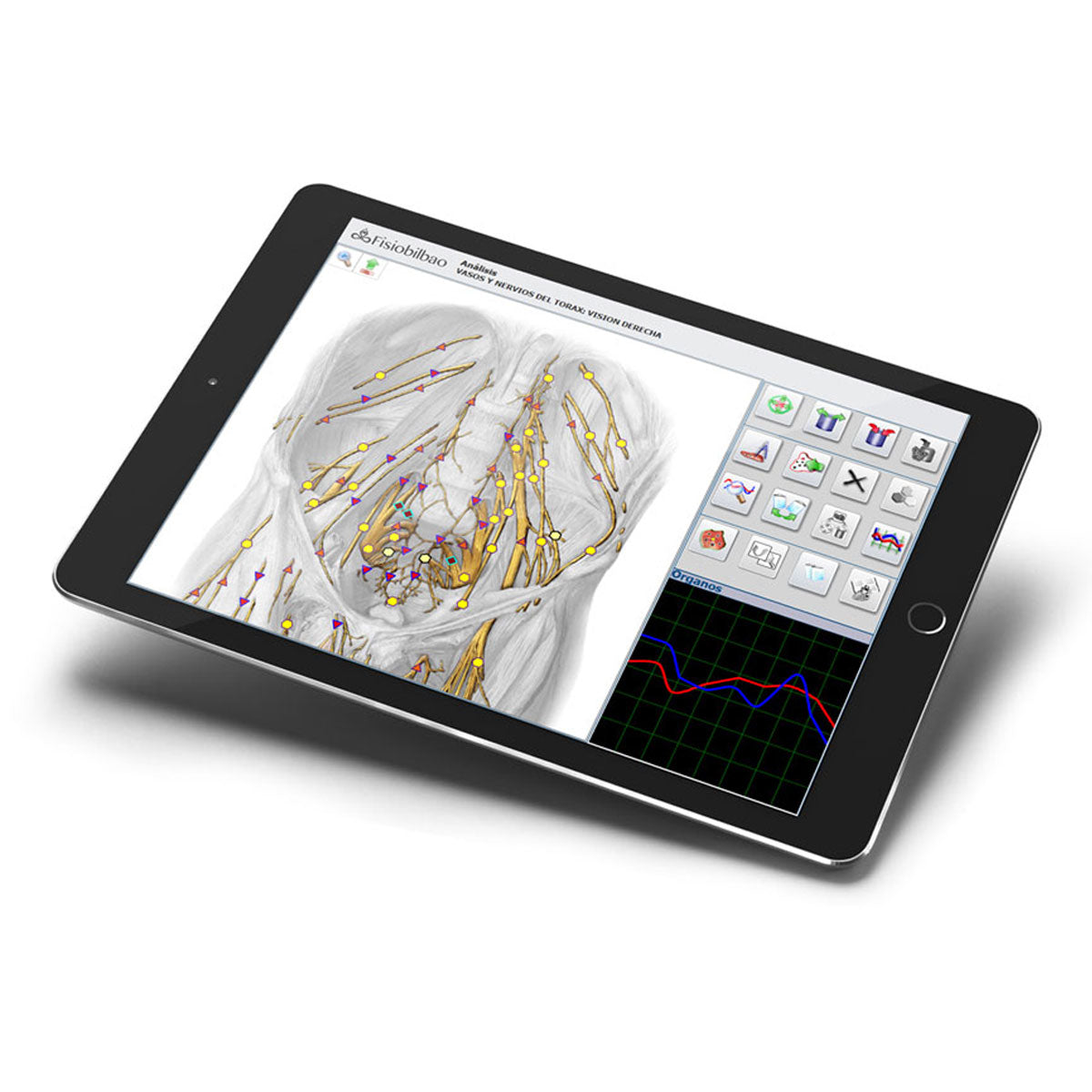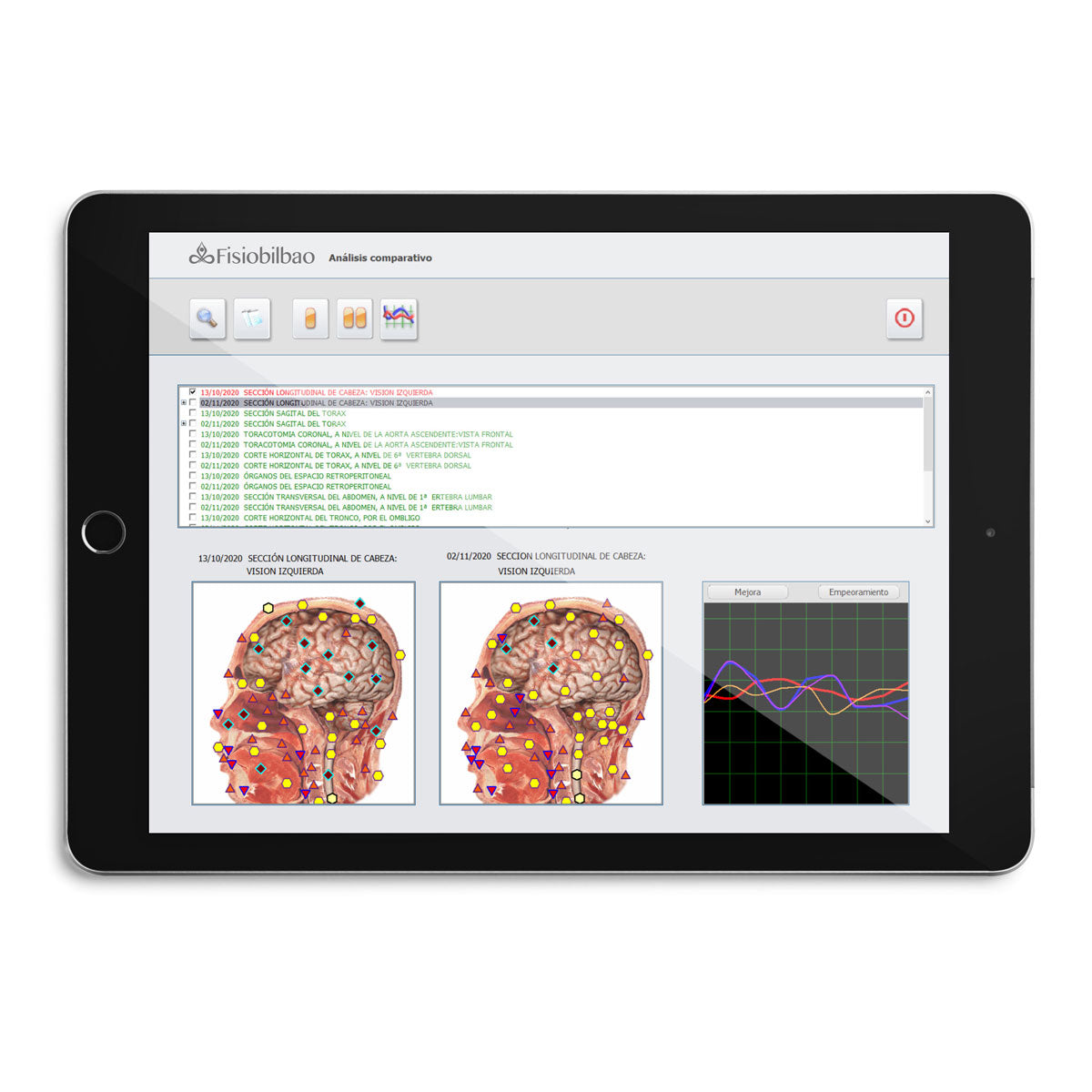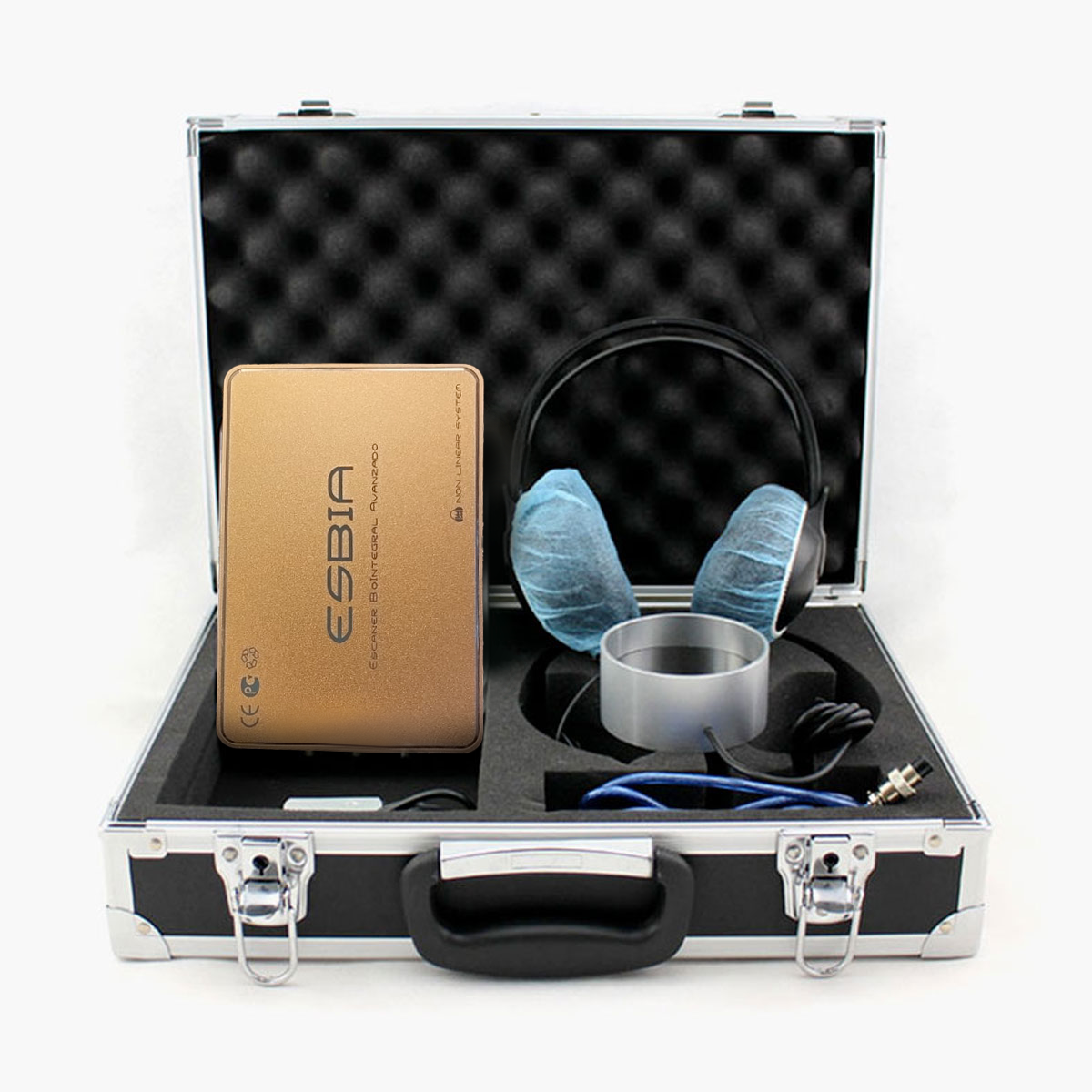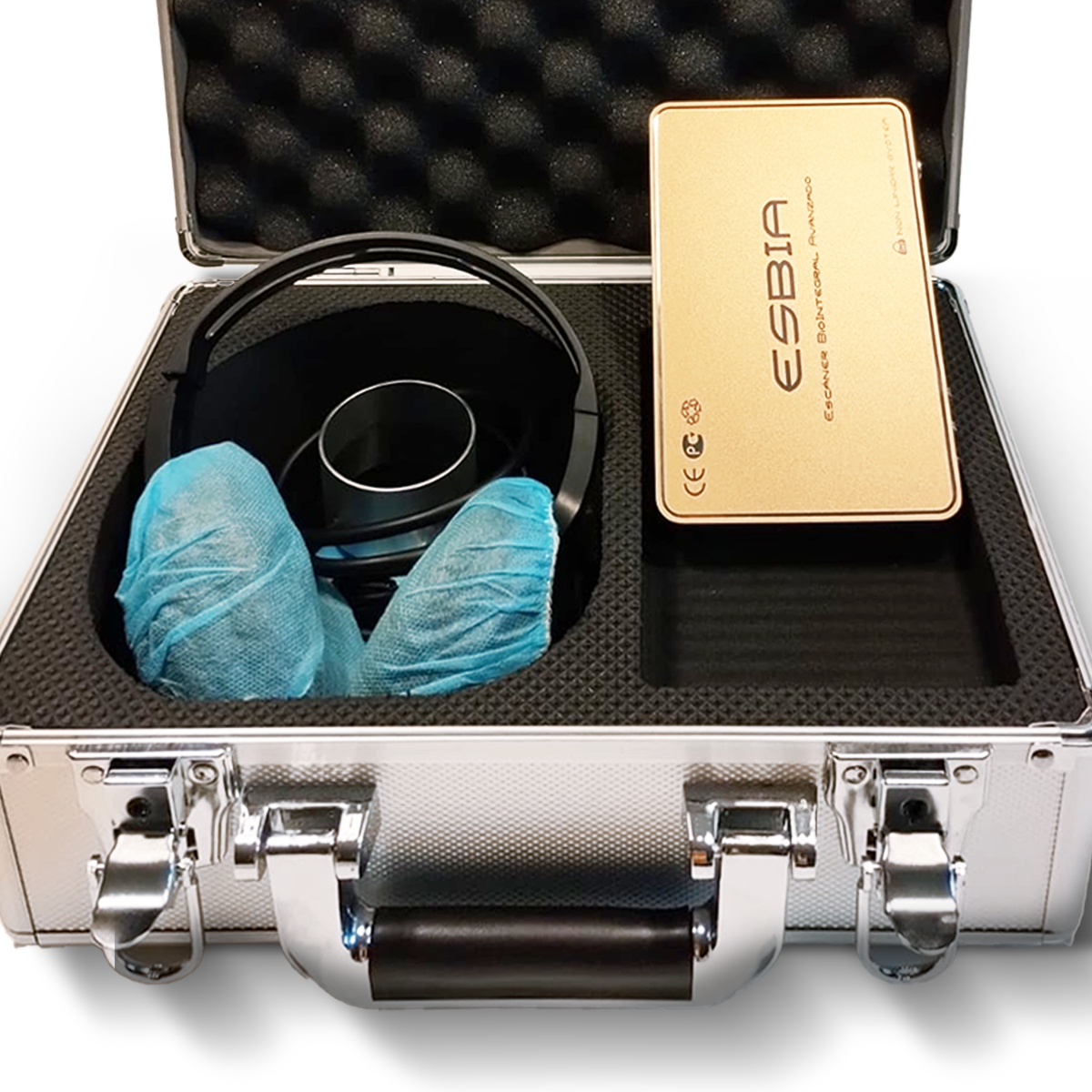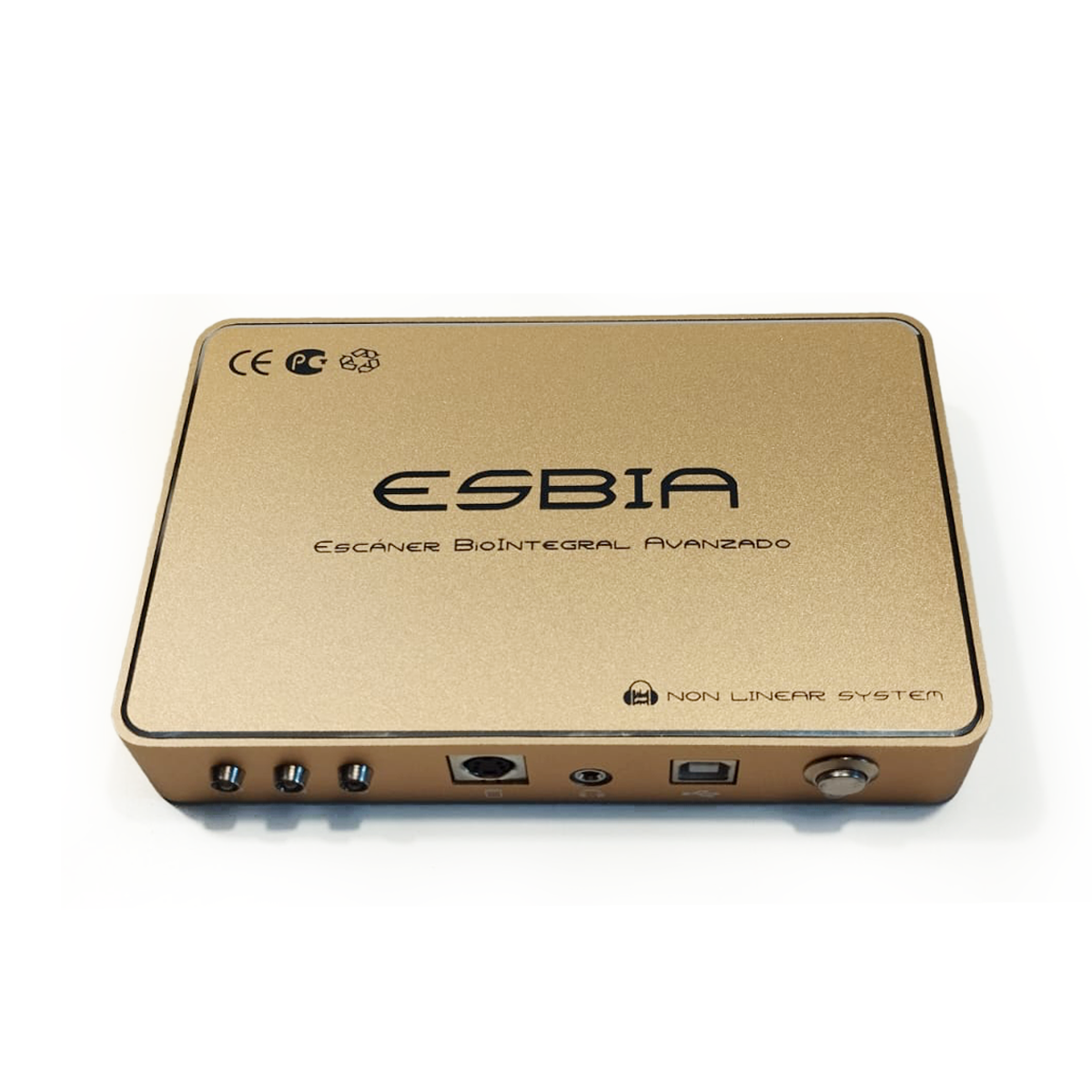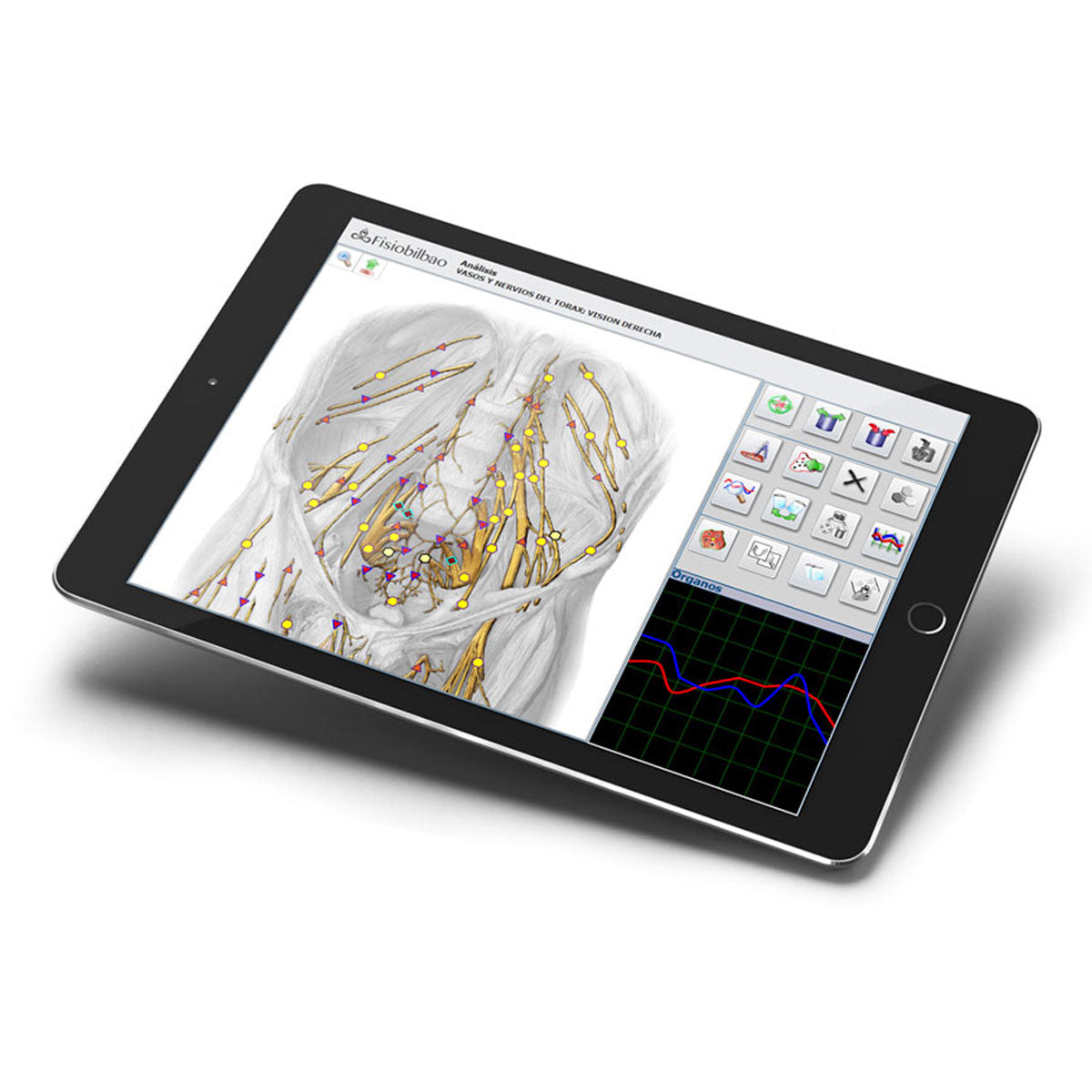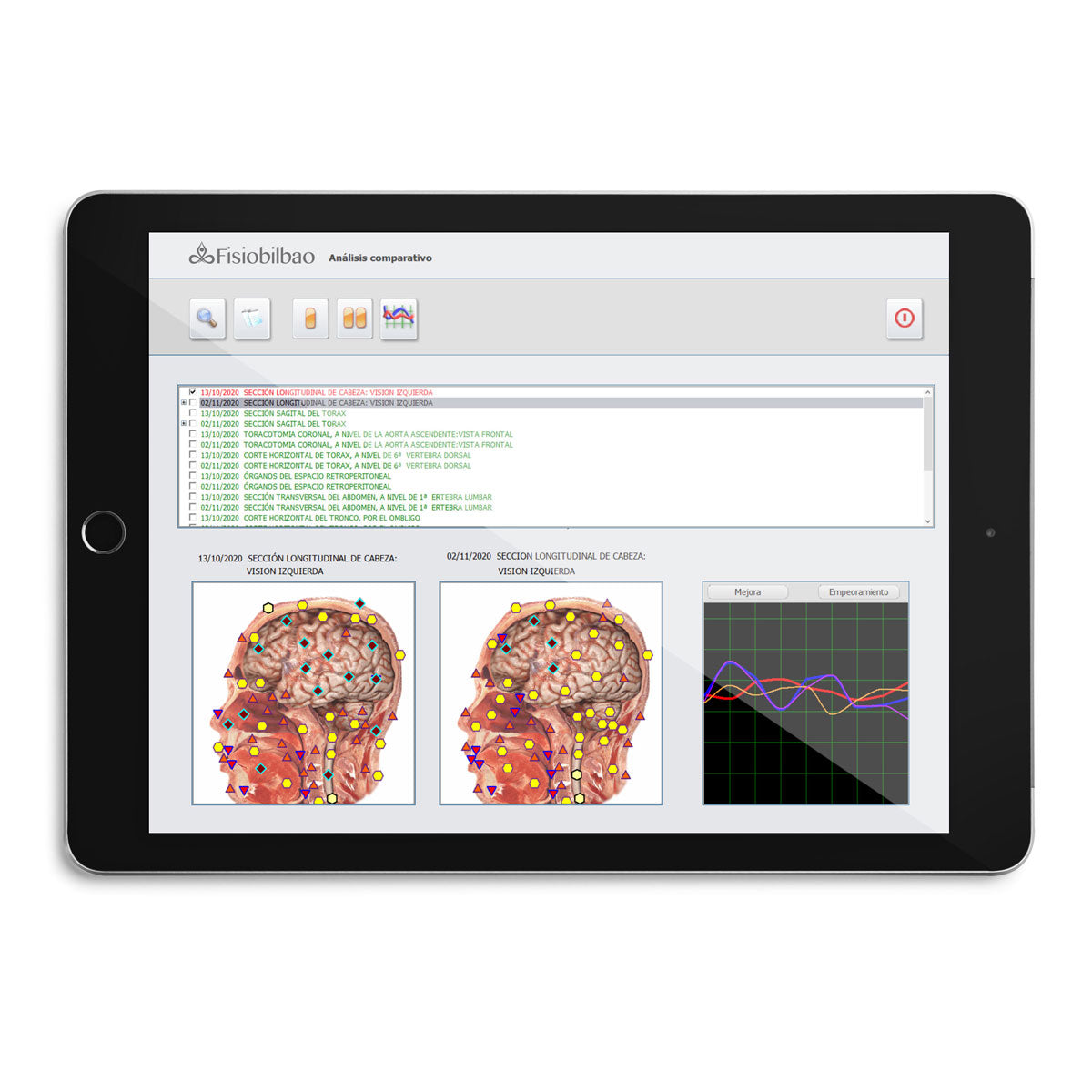ESBIA (Advanced Biointegral Scanner).
Esbia (Advanced Biointegral Scanner) is a state-of-the-art bioresonance device that arose from the need to perform a graphical functional assessment of patients.
It is a Nonlinear Analysis System (NLS) and noninvasive diagnostic tool, specifically designed as an advanced aid for the functional assessment and regulation of patient systems.
Couldn't load pickup availability
Detection of Causal Factors
Detection of Causal Factors
ESBIA allows doctors to investigate the possible origins of disorders or blockages:
- Biochemical Homeostasis: Provides an indicator of biochemical balance (similar to a blood test), where imbalanced parameters (red/orange) can be tested with NLS. For nutrients (minerals, amino acids), it detects bioavailability problems, not necessarily excess or deficiency.
- Microorganisms and Pathogens: Includes a list and information on the frequencies of bacteria, viruses, parasites, fungi, and helminths. It is useful for detecting elusive pathogens such as Candida albicans.
- Toxicological and Allergenic Profile: Allows toxic profiles (including radiation, heavy metals, fluoride, intestinal toxins) and allergenic profiles to be developed.
- Food Sensitivity Testing: Provides a list of beneficial (green), neutral (orange/brown), and harmful (black) foods, ideally examined in a histological section of the small intestine. Information on toxicity (toxin tray) is different from food sensitivity (immune system).
- Psycho-Emotional Analysis: Evaluates psycho-emotional processes and can identify underlying emotional blockages (emotional homotoxins) using Emotional Psychology and Bach
Flower standards.
Individualized Treatment Options
Individualized Treatment Options
ESBIA works as a correction system by
emitting and sending frequencies to restore bioenergetic balance. The system
offers three main therapeutic options, allowing for a completely individualized
treatment:
- Treatment with the Patient's Own Frequencies: Allows for direct treatment of altered areas, lymphocytes, or pathogens. It is possible to reverse pathological information (e.g., from dysbiosis or a microorganism) to cancel that frequency in the body.
- Treatment with Gem and Mineral Frequencies (Lithotherapy).
- Treatment with Medicinal Plant Frequencies (Phytotherapy).
In addition, the system is capable of:
- Identifying Resonant Remedies: Suggests treatments in allopathy, homeopathy(including the most appropriate resonant dilution, from material to subtle), phytotherapy, and lithotherapy.
- Preparation of Remedies (External Transfer): Allows frequency information (from a healthy organ, a homeopathic remedy such as Ignatia, or a reversed pathology) to be copied and transferred to external substances such as water, minerals, or oils for later use.
Follow-up and Practical Aspects
Follow-up and Practical Aspects
- Progress Monitoring: The physician can check the percentage of improvement or deterioration after an intervention and compare the results obtained in different sessions, which helps in the prognosis.
- Tools for the Therapist: Includes a smart filter function that allows automaticselection of the most relevant processes and substances.
- Safety and Reliability: ESBIA is safe andnon-invasive, with high precision in its analyses (85% to 98% for anatomical structure).
- Contraindications: It is important to note that the system should not be used on pregnant women, nursing mothers, people with pacemakers or electrical implants, seizure disorders, or severe hypertension.
Functional Assessment and Early Diagnosis
Functional Assessment and Early Diagnosis
ESBIA works by using light, optical, and acoustic wave resonance to scan the functional state of the body.
- Detectionof Profound Alterations: The equipment tracks information through three levels of analysis (3D scan). It can delve into different biological structures, from organs, tissues, cells, organelles, chromosomes, and DNA structures, down to the molecular level.
- Identification of Entropy: Detects alterations and loss of information, establishing where functional imbalances are located. It uses colored symbols numbered from one to six to represent the degree of disorganization, stress, or imbalance (entropy) in a system, with an increase in entropy indicating pathological processes.
- Analysis of Pathological Trends: It helps evaluate pathological trends and risk profiles, offering early insight before symptoms or disease arise. It can determine whether a process is in a chronic or acute phase.
- Extensive Database: Compares patient data with a database that includes 14,000 digitized substances and 1,432 graphic models of organs and tissues.
